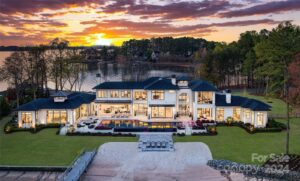 Moving with movers from San Francisco to Los Angeles changes your pace of life and values. San Francisco is compact, with an emphasis on careers and innovation, a fast pace and a high cost of living. Los Angeles offers a more relaxed atmosphere, with an emphasis on creativity and lifestyle, but requires a car due to the distances involved. Moving can shift priorities from work to life balance, but will require adaptation to a new rhythm.
Moving with movers from San Francisco to Los Angeles changes your pace of life and values. San Francisco is compact, with an emphasis on careers and innovation, a fast pace and a high cost of living. Los Angeles offers a more relaxed atmosphere, with an emphasis on creativity and lifestyle, but requires a car due to the distances involved. Moving can shift priorities from work to life balance, but will require adaptation to a new rhythm.
Cost of living: same state, different reality
Life in San Francisco and Los Angeles feels different even with similar salaries because of differences in the cost of living and priorities. Local movers and packers often note that rent in San Francisco is 20-30% more expensive, especially in the city centre, where a one-bedroom apartment costs from £2,000, while in Los Angeles you can find options from £1,500, but with a wider range of prices depending on the neighbourhood. Buying a home in SF is also significantly more expensive due to limited space and high demand.
Transportation costs are higher in Los Angeles because the city is designed for cars – petrol, insurance and parking eat into your budget. In San Francisco, you can get by with public transport, but taxi and car-sharing prices are high. Food and leisure are expensive in both cities, but LA offers more affordable entertainment – beaches, flea markets, food trucks – while SF is focused on gastronomy and technological trends.
The main difference is the perception of life. San Francisco dictates a dynamic, career-oriented rhythm, while Los Angeles values balance, sunshine and informality. Even with the same salaries, money ‘stretches’ differently in LA – less stress, but more spending on comfort.
Climate and environment
The climate in San Francisco and Los Angeles is radically different, affecting everyday life. SF is known for its cool, windy summers with frequent fog and mild winters – without a car with heating, it’s not easy here. This climate encourages layered clothing and spontaneous changes of plans due to sudden cold spells. LA has a Mediterranean climate: hot, dry summers and mild winters with plenty of sunshine. This motivates people to spend more time outdoors – beaches, hiking, and street cafes become part of the routine.
Natural areas also contrast: San Francisco has more urbanised parks like Golden Gate Park, while Los Angeles has extensive mountain trails (Griffith Park) and access to the ocean. As a result, LA instils a culture of outdoor activity, while SF instils intimacy and adaptation to the vagaries of the weather.
Work and career opportunities
San Francisco is the capital of technology and start-ups, dominated by IT giants (Google, Apple, Meta) and venture capital funds. The city attracts engineers, developers and entrepreneurs, offering a unique ecosystem for innovation, but competition for jobs is fierce. Los Angeles is ruled by the entertainment industry: film (Hollywood), music, fashion, and digital content. There are more opportunities here for actors, producers, designers, and bloggers, and game development and creative start-ups are also thriving.
If SF is about hardcore technology and business scaling, then LA is a territory of creativity and media, where networking and personal branding often mean more than a resume. The choice depends on your ambitions: coding in Silicon Valley or creating content under palm trees.
Culture, pace, and lifestyle
San Francisco lives in ‘start-up sprint’ mode: early mornings, busy schedules, and a cult of productivity. Even in coffee shops, people discuss pitch decks, and work-life balance often takes a back seat to career ambitions. The city attracts hyper-motivated professionals, creating an atmosphere of constant deadlines. In Los Angeles, time flows differently – the sunny climate and car culture create a more relaxed rhythm. Two-hour lunches, spontaneous surf sessions, and leisurely networking brunches are the norm.
SF’s social dynamics are built around technology and status, while LA values self-expression and connections. Mornings in SF start with a stand-up meeting, while in LA they start with cold-pressed juice and yoga on the beach. It’s a difference in mentality: ‘building the future’ versus ‘living in the present.’
Transportation and urban layout
San Francisco is a city for pedestrians and public transport. Compact streets, a well-developed tram network and BART make cars more of a burden than a necessity. Dense development and limited parking space have shaped an urban culture where people are accustomed to walking or using car sharing. In Los Angeles, you can’t get anywhere without a car. The sprawling metropolis with endless suburbs and chaotic planning turns the car into an extension of the personality. Locals spend hours in traffic jams, but in return they get freedom of movement – from the beaches of Malibu to the slopes of Big Bear.
This contrast influences lifestyle: SF, with its walkability, encourages spontaneous encounters and street life, while LA reinforces the intimacy of car travel. In one case, you jostle in a crowded tram; in the other, you meditate in traffic on the 405 motorways.
Which city is right for you?
San Francisco and Los Angeles offer fundamentally different lifestyles. Work: SF is a mecca for techies and start-ups with high salaries but fierce competition; LA is a platform for creators and media professionals, where networking is valued more than a degree. Lifestyle: SF is dominated by an urban rhythm and a cult of productivity, while LA has a relaxed atmosphere with an emphasis on wellness and outdoor activities. Budget: Rent in SF is a third more expensive, but in LA, hidden costs (car, petrol, insurance) eat up the difference.
Interests are also dictated by location: SF residents are obsessed with technology and careers, while LA is dominated by a cult of cinema, music and beach lifestyle. The choice between cities is a choice between intense professional growth and living the ‘California dream’ lifestyle. Technocracy versus creativity, density versus space, ambition versus harmony.


